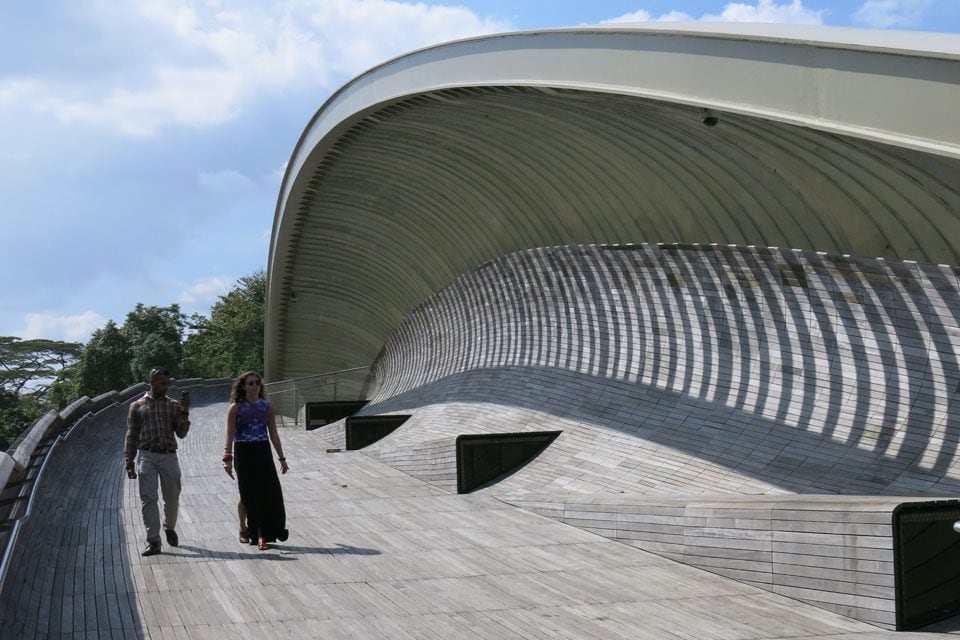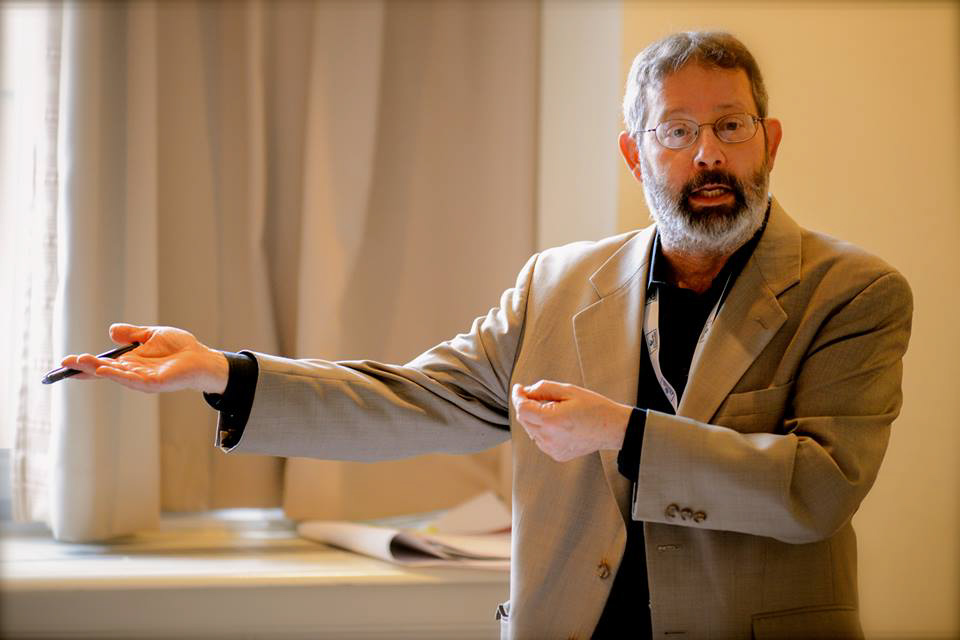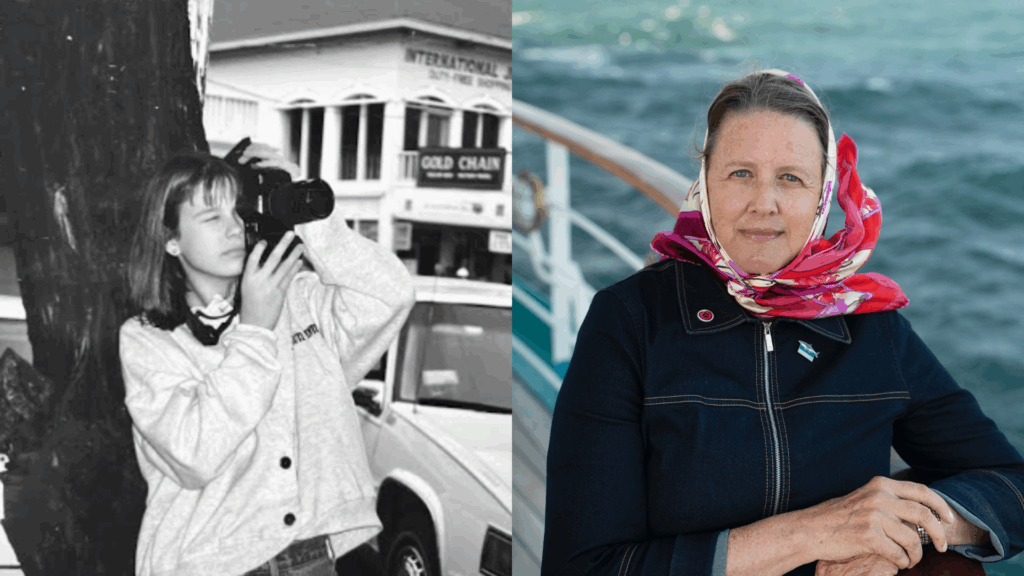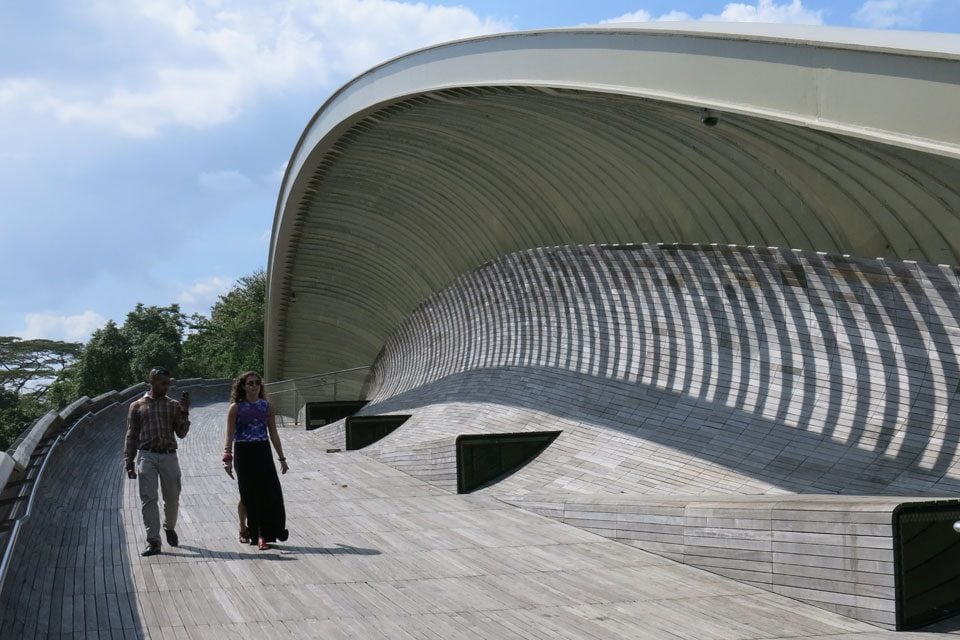
Seated in an air-conditioned auditorium at the National University of Singapore (NUS), students in Prof. Ellen Bassett’s Global Cities/Ordinary Cities class listened to two dynamic presentations from experienced urban planners. Dr. Johannes Widodo and Dr. Limin Hee addressed the history of the island nation, the challenges of improving Singapore’s infrastructure and what it will take for the country to remain a benchmark for sustainable cities around the world. In a country with a growing population and a finite amount of land space, the professors explored what city planners and government officials can do to improve the quality of life for their citizens, nurture a competitive economy and help a sustainable environment continue to bloom.
Although it is referred to as the “City in a Garden,” Singapore hasn’t always been as green and organized as it is today. At the crossroads of many important trade routes, Singapore’s economy began as a port city and a center of maritime commerce. In the 1960s after declaring its independence from the British, it evolved into an industrial city, specializing in labor-intensive manufacturing. In the 1990s, it was reinvented yet again as a high tech city and leader in green technology. Now Singapore prides itself on being a “Smart City,” employing sustainable practices, streamlining public transportation and producing a stable infrastructure.
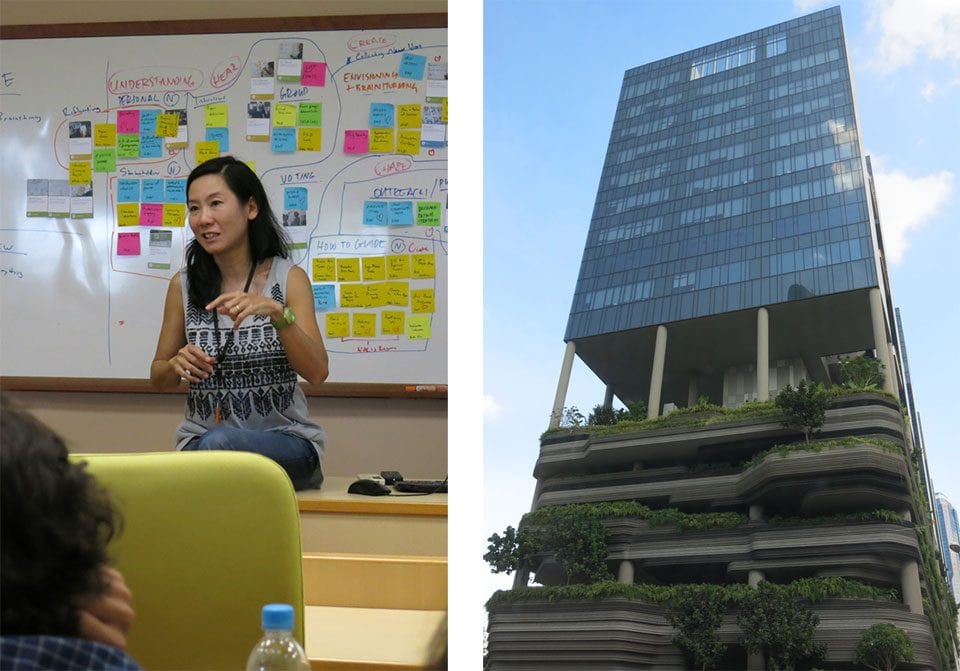
One of Singapore’s biggest challenges is its restricted space coupled with its growing population. With 5.5 million citizens living on 716.1 km2 of land, it is the third densest country in the world (after Macau & Monaco). These factors together squeeze the land like a balloon, forcing pressure to release in the form of both rapid skyward growth and continual underground expansion. The high population also fills the streets with cars that pollute the air and hamper the city’s day-to-day functioning. In addition, the people of Singapore need to maintain a dependable and safe source of drinking water, food and waste disposal. The challenges are great, but the city planners and government officials are goal oriented and forward-thinking.
Singapore is problem-solving both creatively and pragmatically. Some goals that have been made to help offset the undesirable effects of urban density and construction are as follows:
- 80% of buildings will be “green” by 2030
- Improved public transportation will guarantee that 85% of all commuters will arrive at their destination within 60 minutes, encouraging more citizens to use the train and bus systems
- 55% of the nation’s water needs will come from NEWater plants by 2060, up from 30% currently
- Vertical indoor gardens will provide fresh produce
The adoption of green and smart technologies is not only an impressive feat, according to Widodo, but also a necessity:
Singapore is like a bike with two wheels. If we slow down our sustainable endeavors, we will tip over.
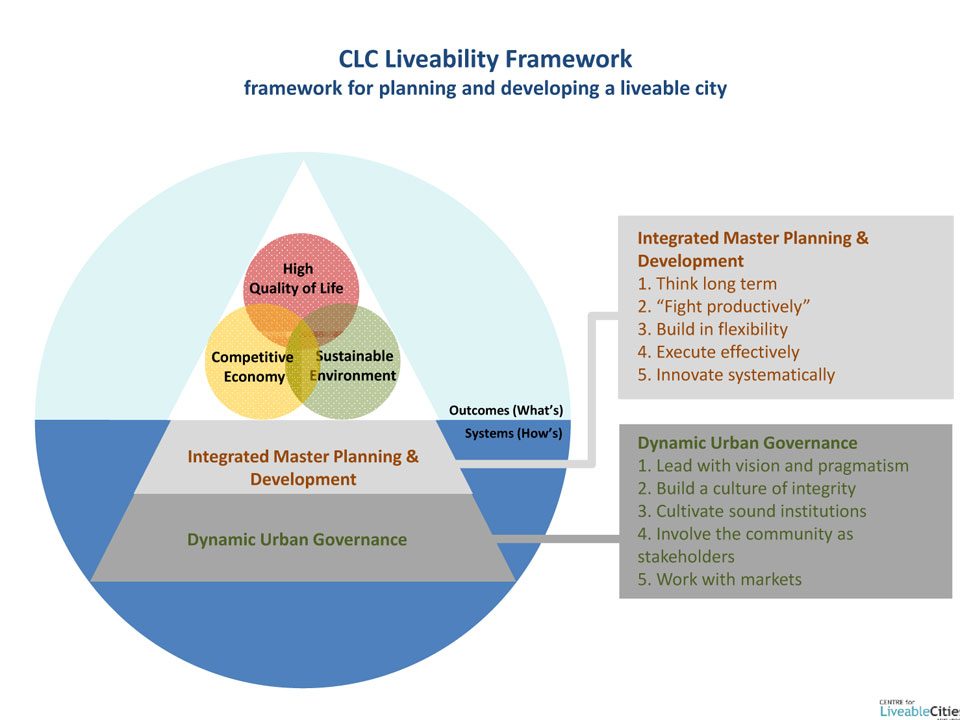
Hunter MacWilliams, a lifelong learner who was encouraged by his son ‚Äì a ’98 SAS alum ‚Äì to go on a SAS voyage, was impressed to hear of Singapore’s plan for sustainability and to see the results of the plans being executed. “It is one thing to hear about the growth and development of Singapore during lectures on board the MV Explorer,” he said. “But it’s reinforcing to actually experience the growth and to have a Singapore University professor explain the development of the city.”
For Jack Hugh Reynolds, a gap year student who will begin his studies at Oberlin College in the fall, Singapore is a global leader, whose ambition will help raise the bar for what it means to be a sustainable city.
Although [Singapore] is quite small compared to the U.S., I think that by tackling these little problems, it can push the ball down the yard line and encourage others to follow its example.
